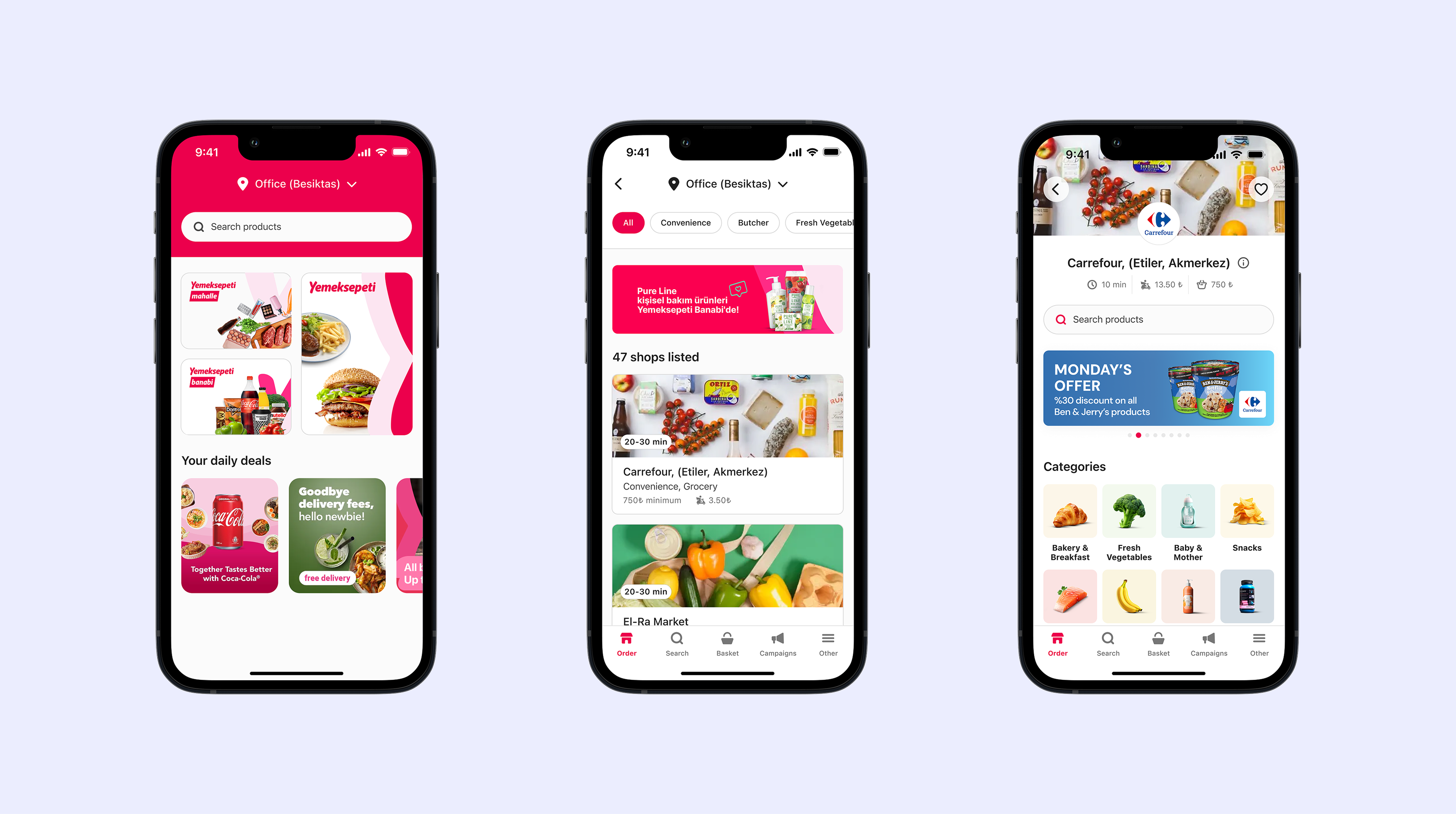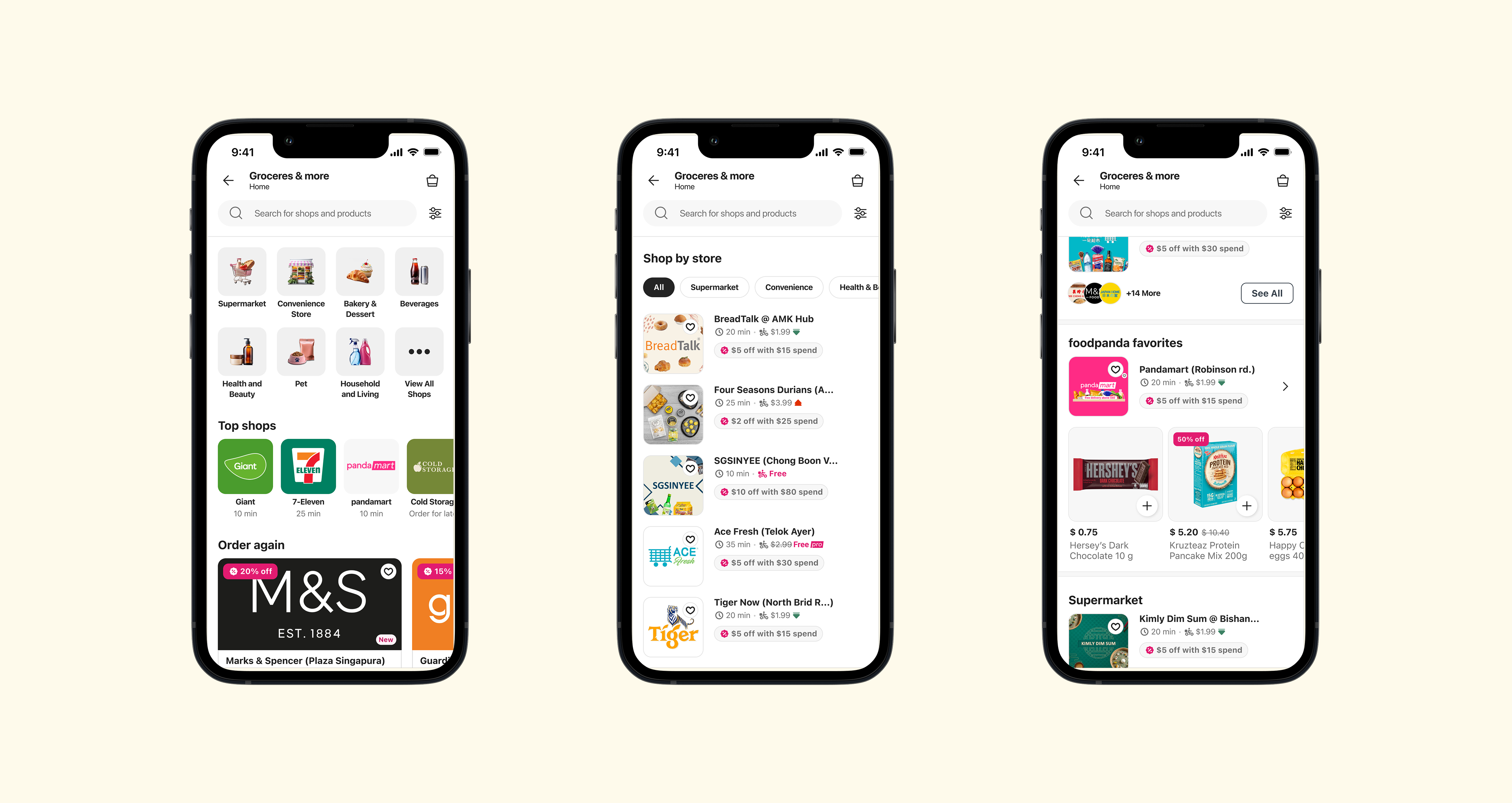
The Challenge
The discovery page shapes how users browse, compare, and decide where to order. Our research across multiple markets revealed two main shopping modes: urgent (84% of Q-commerce orders placed within one hour of adding to cart) and exploratory browsing.
The existing discovery flow didn’t support either mode well. It made it hard for users to find a single store that could fulfill their entire order, causing wasted time, extra delivery fees from multi-vendor checkouts, and more drop-offs.
- Low engagement with vendor discovery. (10% click, 0.15% conversion).
- Layout and components placement misaligned with user priorities in both urgent and browsing scenarios.
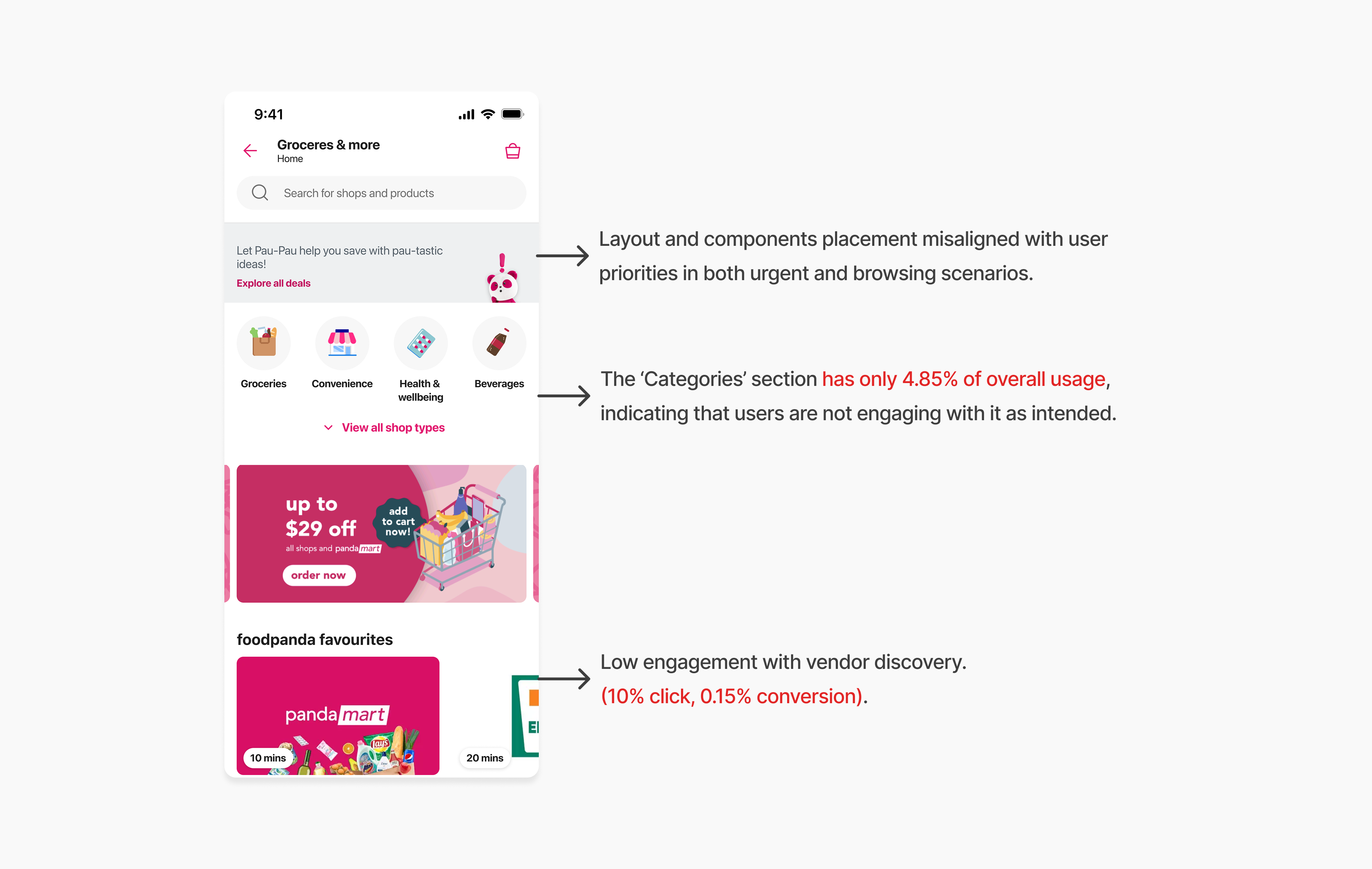
Previous “above the fold”
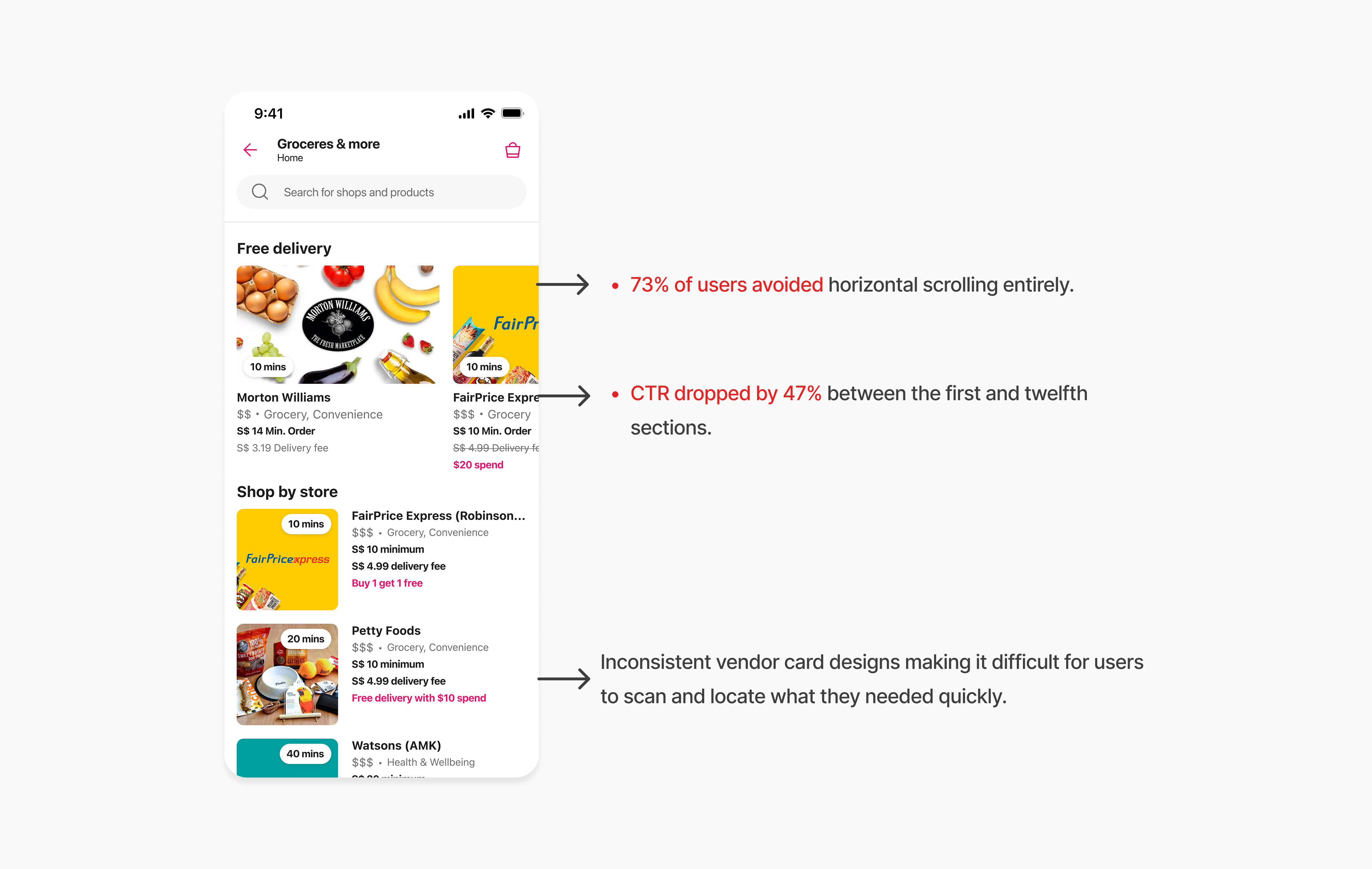
Previous vendor listing and navigation
User & Business Goals
User Goals:
- Quickly find and reorder and explore new options.
- Compare vendors based on availability, price, and delivery time at a glance.
- Have a discovery experience that matches shopping intent — urgent or exploratory.
Business Goals:
- Increase conversion rate by making the discovery flow faster and reducing friction.
- Boost order volume by surfacing more relevant vendors and products.
- Encourage adoption of new vendors.
Hearing It From the Users
Before jumping into solutions, I conducted interviews and collaborated with researchers to deep-dive into discovery research — including grocery use case analysis and usability testing of discovery flows.
Key Insights:
- Priority hierarchy: Availability → Price & promos → Delivery cost → ETA.
- High-intent triggers: “Order Again” and “Top Shops” drove the fastest conversions.
- Trust cues: Brand logos, delivery badges, and dietary labels boosted adoption of new vendors.
- Category navigation: Users preferred exposed categories at the top for quick scanning.
These insights shaped how I prioritised the interface and restructured information to match user decision-making patterns.
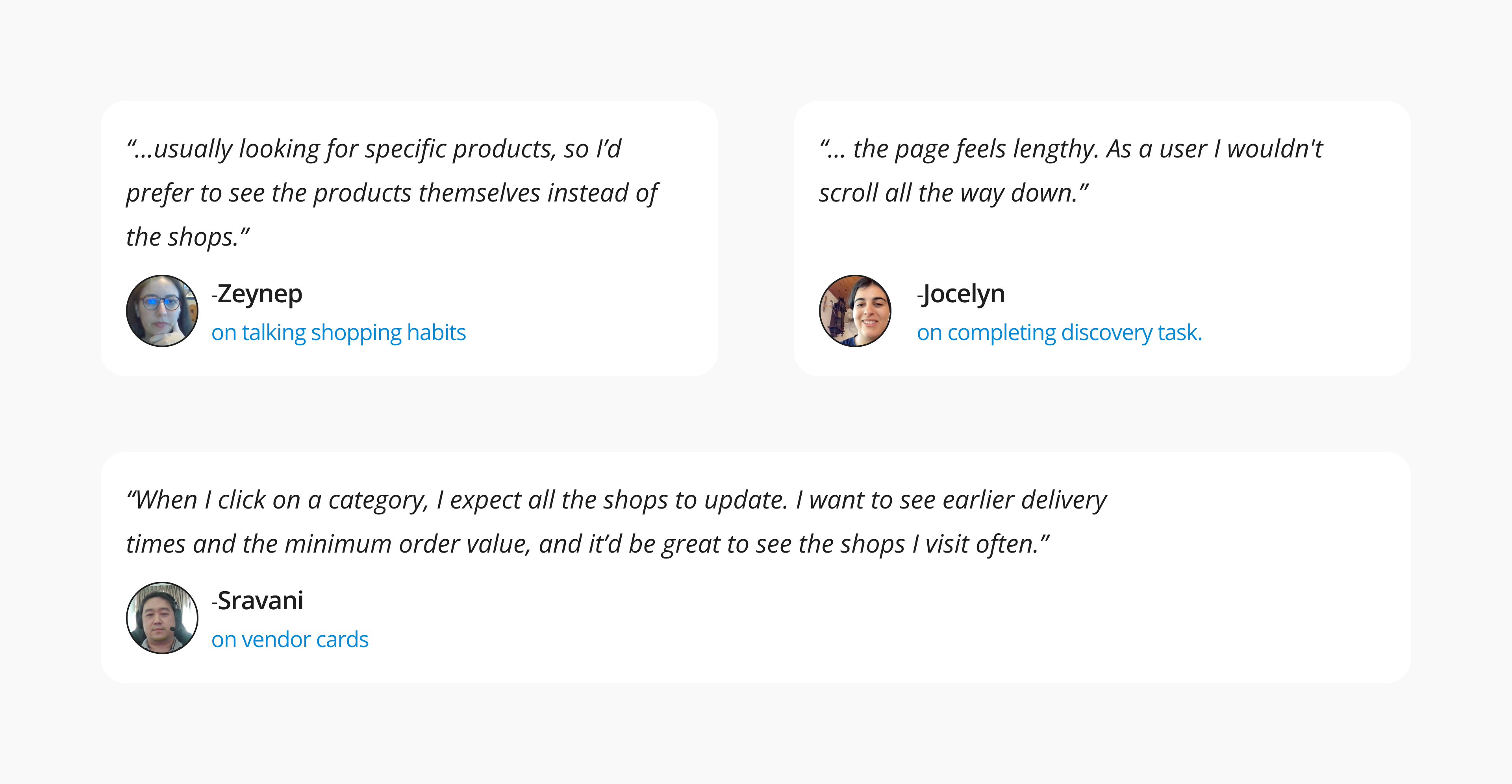
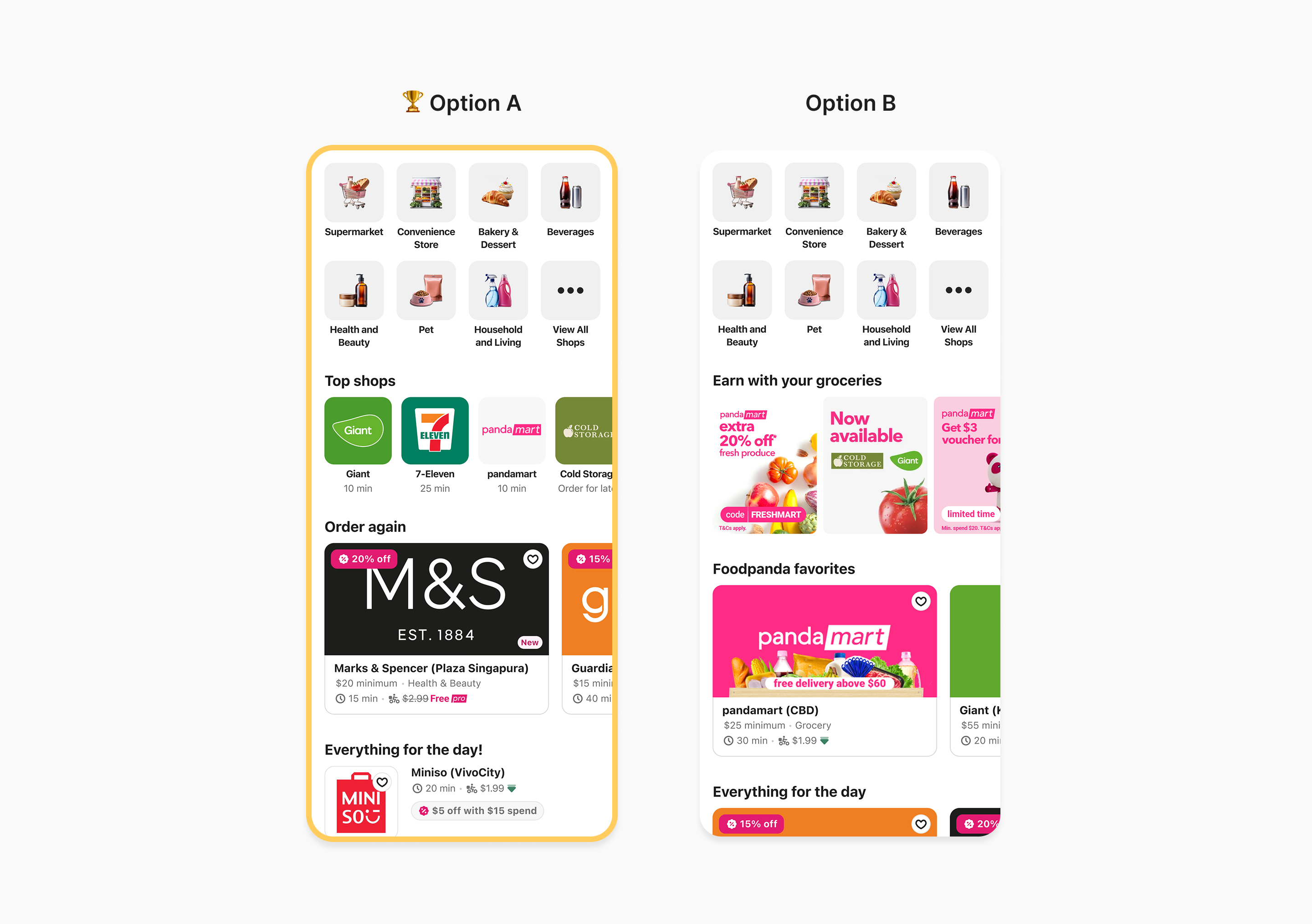
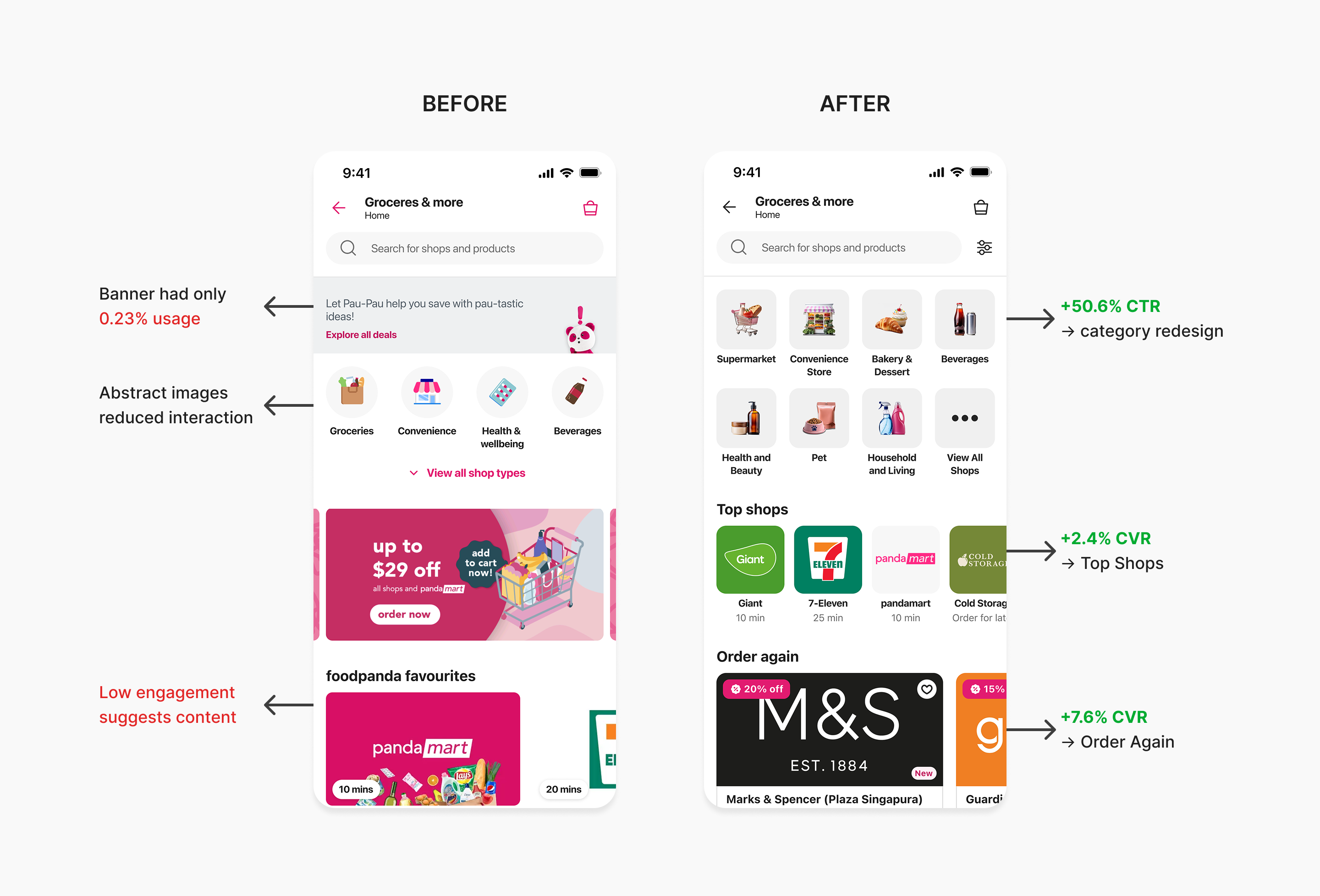
BEFORE
AFTER
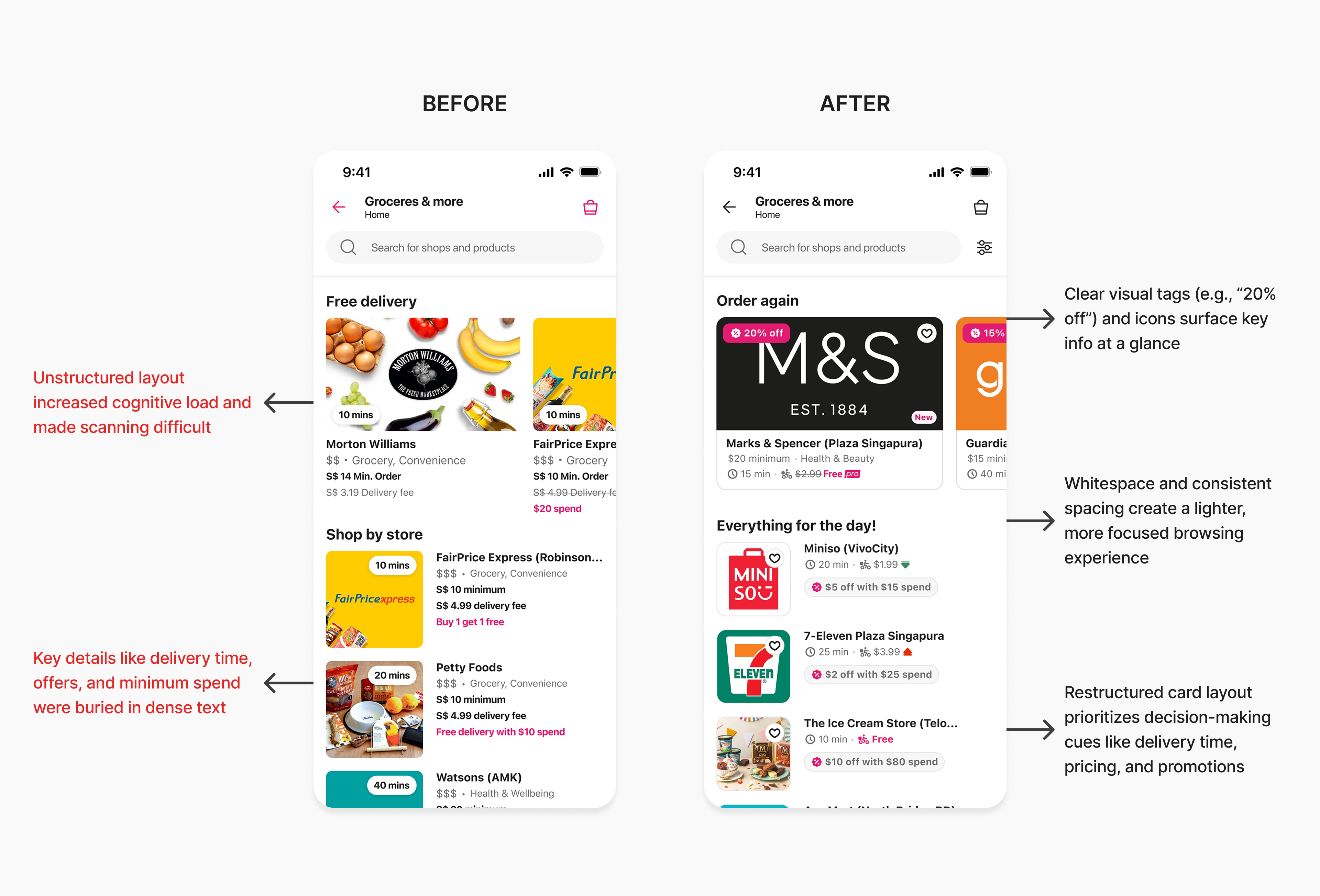

My Role
I redesigned the discovery experience, translating complex multi-market problems into intuitive mobile flows that balanced business priorities with user needs.
I was responsible for leading the end-to-end redesign of the discovery experience covering everything from user research and ideation to prototyping, usability testing, and final delivery.
The Challenge
The discovery page shapes how users browse, compare, and decide where to order. Our research across multiple markets revealed two main shopping modes: urgent (84% of Q-commerce orders placed within one hour of adding to cart) and exploratory browsing.
The existing discovery flow didn’t support either mode well. It made it hard for users to find a single store that could fulfill their entire order, causing wasted time, extra delivery fees from multi-vendor checkouts, and more drop-offs.
- Low engagement with vendor discovery. (10% click, 0.15% conversion).
- Layout and components placement misaligned with user priorities in both urgent and browsing scenarios.

Previous “above the fold”

Previous vendor listing and navigation
User & Business Goals
User Goals:
- Quickly find and reorder and explore new options.
- Compare vendors based on availability, price, and delivery time at a glance.
- Have a discovery experience that matches shopping intent — urgent or exploratory.
Business Goals:
- Increase conversion rate by making the discovery flow faster and reducing friction.
- Boost order volume by surfacing more relevant vendors and products.
- Encourage adoption of new vendors.
Hearing It From the Users
Before jumping into solutions, I conducted interviews and collaborated with researchers to deep-dive into discovery research — including grocery use case analysis and usability testing of discovery flows.
Key Insights:
- Priority hierarchy: Availability → Price & promos → Delivery cost → ETA.
- High-intent triggers: “Order Again” and “Top Shops” drove the fastest conversions.
- Trust cues: Brand logos, delivery badges, and dietary labels boosted adoption of new vendors.
- Category navigation: Users preferred exposed categories at the top for quick scanning.
These insights shaped how I prioritised the interface and restructured information to match user decision-making patterns.



BEFORE
AFTER


My Role
I redesigned the discovery experience, translating complex multi-market problems into intuitive mobile flows that balanced business priorities with user needs.
I was responsible for leading the end-to-end redesign of the discovery experience covering everything from user research and ideation to prototyping, usability testing, and final delivery.
The Challenge
The discovery page shapes how users browse, compare, and decide where to order. Our research across multiple markets revealed two main shopping modes: urgent (84% of Q-commerce orders placed within one hour of adding to cart) and exploratory browsing.
Yet the existing discovery flow didn’t support either mode well. It made it hard for users to find a single store that could fulfill their entire order, causing wasted time, extra delivery fees from multi-vendor checkouts, and more drop-offs.

Previous “above the fold”

Previous vendor listing and navigation
User & Business Goals
User Goals:
- Quickly find and reorder and explore new options.
- Compare vendors based on availability, price, and delivery time at a glance.
- Have a discovery experience that matches shopping intent — urgent or exploratory.
Business Goals:
- Increase conversion rate by making the discovery flow faster and reducing friction.
- Boost order volume by surfacing more relevant vendors and products.
- Encourage adoption of new vendors.
Hearing It From the Users
Before jumping into solutions, I conducted interviews and collaborated with researchers to deep-dive into discovery research — including grocery use case analysis and usability testing of discovery flows.
Key Insights:
- Priority hierarchy: Availability → Price & promos → Delivery cost → ETA.
- High-intent triggers: “Order Again” and “Top Shops” drove the fastest conversions.
- Trust cues: Brand logos, delivery badges, and dietary labels boosted adoption of new vendors.
- Category navigation: Users preferred exposed categories at the top for quick scanning.
These insights shaped how I prioritised the interface and restructured information to match user decision-making patterns.



BEFORE
AFTER

